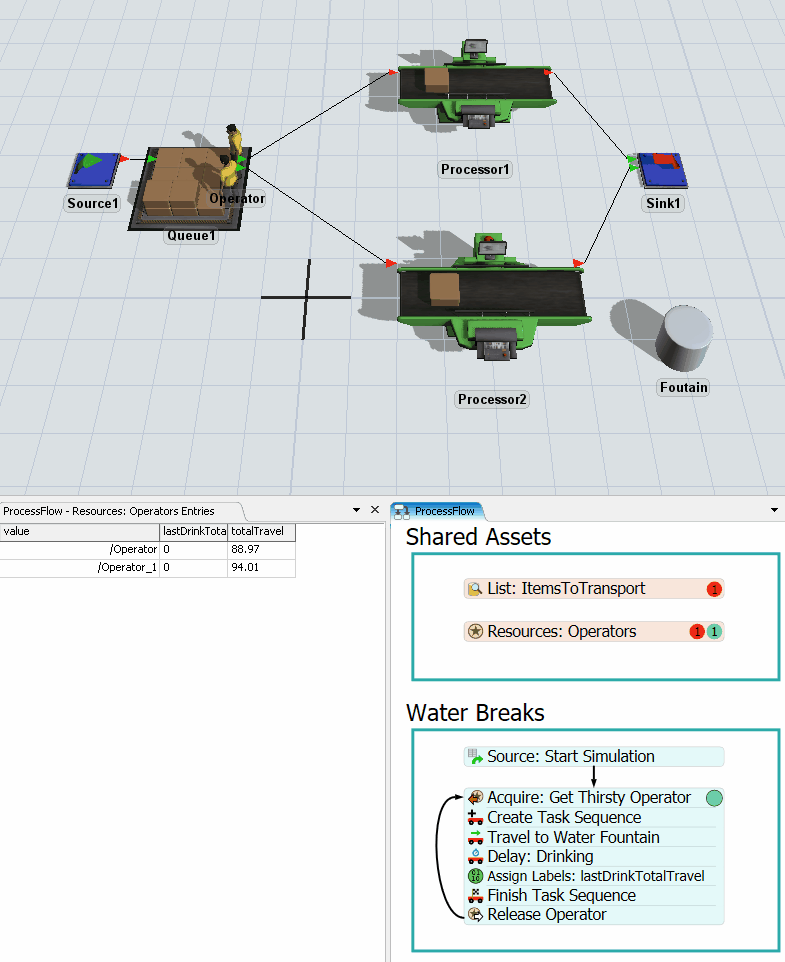Tutorial 1 - Using Shared Assets
The Process Flow tool is designed to help you build custom logic for your simulation model. This is the first tutorial in a set of tutorials that will introduce you to some of the full capabilities of the Process Flow tool.
In this tutorial, you'll learn more about the Process Flow tool's three shared assets: lists, resources, and zones. Using resources and lists, you'll create tasks for two operators in a 3D model to work on. The main task the operators will work on is transporting flow items from a queue to one of two processors. However, when the operators have traveled more than 100 meters, they will get thirsty and need to take break to go to the drinking fountain. When you're finished with the first two tutorials, your simulation model will look similar to the following image:

In the last tutorial, you'll learn how to use zones to get basic statistical information from the simulation model by designing a process flow that will track the total price of all the items that are currently being processed in the simulation model.

Tasks Covered
This tutorial will cover the following tasks:
Use a List and a Resource
In this task, you'll learn how to use resources and lists to build a transportation task sequence in a process flow for two operators. You'll also learn how to link resources and lists to 3D objects in the model. A lot of the model's functionality will come from the careful management of labels, so you'll also learn how to manage and coordinate labels throughout a process flow.
Make a Resource Act Like a List
In this task, you'll add process flow logic that will occasionally interrupt the operator's normal transportation task sequences. Every time the operator travels more than 100 meters, they'll stop their normal tasks to get a drink of water. In order to create this logic, you'll build an additional section in the process flow for a water break task sequence and you'll configure the resource so that it has some of the same functionality as a list.
Add a Zone to Collect Data
In this task, you'll learn how to use zones by designing a process flow that will track the total price of all the items that are currently being processed in the simulation model. Zones are useful for both statistics gathering and adding constraints to a model. This tutorial will primarily demonstrate the statistical functionality of the zone.
For More Information
For more in-depth explanations of the concepts covered in these tutorials see: